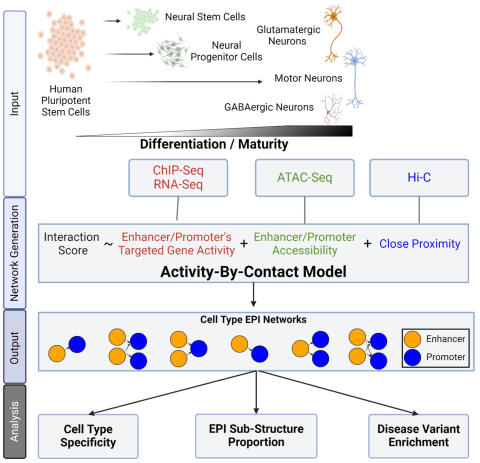
Abstract
Gene expression is orchestrated by a complex array of gene regulatory elements that govern transcription in a cell-type-specific manner. Though previously studied, the ability to utilize regulatory elements to identify disrupting variants remains largely elusive. To identify important factors within these regions, we generated enhancer–promoter interaction (EPI) networks and investigated the presence of disease-associated variants that fall within these regions. Our study analyzed six neuronal cell types across neural differentiation, allowing us to examine closely related cell types and across differentiation stages. Our results expand upon previous findings of cell-type specificity of enhancer, promoter, and transcription factor binding sites. Notably, we find that regulatory regions within EPI networks can identify the enrichment of variants associated with neuropsychiatric disorders within specific cell types and network sub-structures. This enrichment within sub-structures can allow for a better understanding of potential mechanisms by which variants may disrupt transcription. Together, our findings suggest that EPIs can be leveraged to better understand cell-type-specific regulatory architecture and used as a selection method for disease-associated variants to be tested in future functional assays. Combined with these future functional characterization assays, EPIs can be used to better identify and characterize regulatory variants’ effects on such networks and model their mechanisms of gene regulation disruption across different disorders. Such findings can be applied in practical settings, such as diagnostic tools and drug development.
